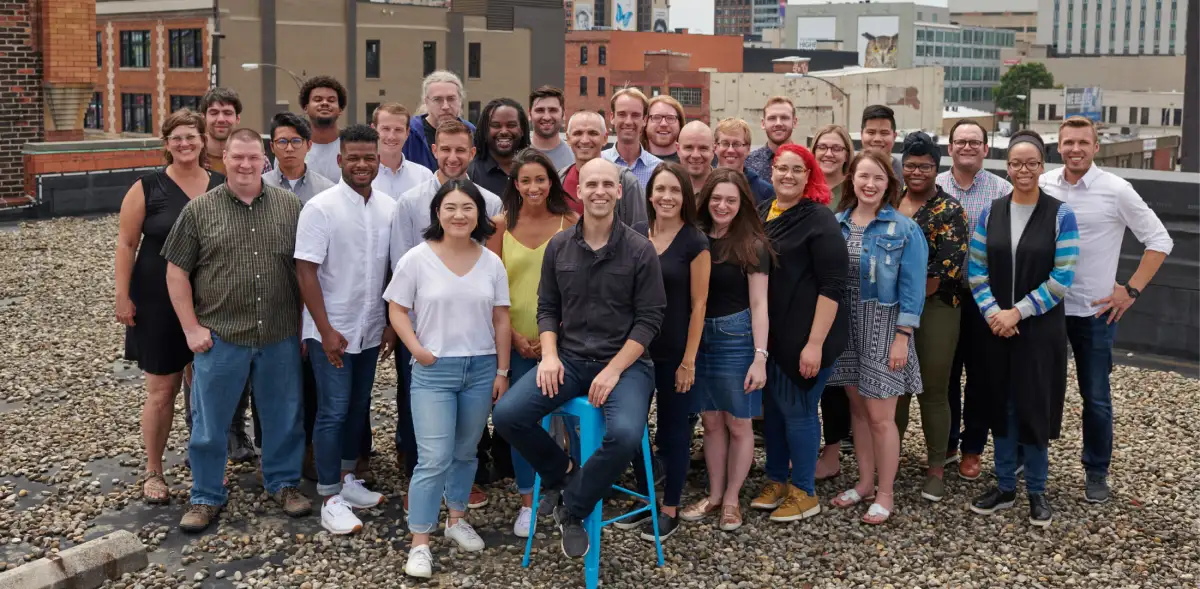This piece is Part Two of a two-part series featuring Beam Dental.
Part One: Turning the Ship Around With OKRs
Summary
After discovering that their execution of OKRs were the root of their company’s issues, the team at Beam Dental had to make significant changes to their practice to turn things around. Here, we detail the lessons they learned along the way, and how OKRs can help teams even when they’re not working.
“How many times did you brush your teeth today?” Just as tracking systems like Fitbit inspire people to exercise more by “counting steps,” Beam Dental rewards customers who take especially good care of their teeth. Using a Bluetooth-enabled sonic toothbrush, the Ohio-based insurance provider leverages technology to tackle America’s systemic problem of poor dental hygiene, an issue that also happens to be the “root cause” of many costly diseases.
With 74 million Americans without dental coverage, the system has been desperate for new ideas. Coming from a family of dentists, CEO Alex Frommeyer (Fro) understood how badly reform was needed and was ready to innovate. Beam’s algorithm is to drive down rates: The more a customer brushes, the lower their rate. This kind of connected model looks like the future of healthcare — personalized premiums for health conditions, enabled by the Internet of Things (IoT).
In addition, Fro and his co-founders Alex Curry and Dan Dykes set out to create a superior customer experience — by adding more products, automation, software, and beautiful interfaces. After securing $55 million in Series C, they had ambitious plans to grow from programs in 27 states to reach over 90% of the U.S. population by the end of 2019.
This meant lots of new hires. Over the course of 2019, the company grew from about 50 employees to 200 — and rapid growth made it more challenging to stay focused on their audacious goals. To ensure company-wide alignment, Fro worked with other executives to create the company’s first OKRs (Objectives and Key Results). He said, “They’re the best way to point everyone in the same direction.” After handing them off to senior department heads, Fro was surprised to hear when teams began crashing into each other with confused priorities due to conflicting cascaded OKRs.
Fortunately, as Fro puts it, “OKRs work even when they aren’t working.” That’s because even having “imperfect” OKRs helped the leadership team quickly identify problems and adapt. When they revised them, the writing process was more deliberate. This time they consulted with both senior managers and the analytics team to ensure the goals would be ambitious, aligned, and achievable.
2019 Company-Wide OKRs
Corrected 2020 Company-Wide OKRs
This process became a master lesson in the Do’s and Don’ts of writing OKRs. Below is what Beam management learned to do differently to right the ship, and stop teams from pulling in opposite directions.
1. Don’t put numbers in Objectives, keep them broader and more aspirational.
Fro said, “Our Objectives really looked more like Key Results because we put a handful of measurable components instead of vision into the Objectives.” He admitted it felt scary creating 2020 goals that were “much more abstract and strategy based, with numbers removed from the wording. It felt like we were putting the end goal at risk.” Actually, the opposite is true.
Putting a company’s vision in the Objectives generates better results because it gives those who follow more flexibility to add their own insights to craft the best approach. Further, it becomes clear to everyone where priorities lie. An aspirational Objective provides a foundation that unites and guides the Key Results that follow, making success more likely.
With “take two,” Fro and the other executives learned their lesson. By making the new OKRs broader and more aspirational, they enabled everyone to adapt to change throughout the year while still heading towards their North Star.
2. Train people, especially those who have no experience with OKRs.
Without a common understanding of how OKRs work, teams sometimes wrote their own Objectives on an ad hoc basis. Adding to the confusion, many new hires lacked sufficient context to have a true feel for Beam’s culture and priorities. The second time around, Beam committed to extensive training to show teams how to create and own their OKRs, enable buy-in throughout the business and empower individuals to take ownership of their own goals.
Given the size of the company and different understandings with respect to the OKR approach, it would take time. Fortunately, Brian Hough, CTO, had some serious OKR experience. Ironically, before joining Beam, Hough had previously worked at two other companies (New Relic and Turner Broadcasting’s Bleacher Report) just as they were transitioning to OKRs.
Training happened in several phases. First, before asking them to write their team OKRs, Hough and Dykes did a larger OKR training session for all managers. Next, they followed up with 13 back-to-back, 1:1 or 1:2 meetings with each manager to go over what they’d written. According to Hough, "Dan [Dykes] and I literally spent two whole days in my office with people just coming in like a revolving door with OKRs and giving feedback on them.”
3. Ask “Why does this team exist?”
Dykes explained, “A good Objective can be just trying to understand what your team’s overall impact is.” Often, in the 1:1 meetings, a manager would start writing an Objective that looked like a mission statement, so he and Hough would clarify the concept by asking the manager to “tell me why your department exists, rather than what you are trying to accomplish this year.”
The second point they had to drive home was that Objectives need to have Key Results that are measurable definitions of success, or they aren’t useful. “What are you hoping to achieve by making those 35 calls a day?” Hough jokingly told team leaders, “If you were to disappear tomorrow, would your team know what to do with themselves — and why?”
4. Track and align teams. And repeat.
In the first go around, when the 2019 OKRs were applied by the different functional areas without tracking, it created tension and misalignment between teams. Drawing on his previous experiences with launching OKRs, Hough observed that “the biggest missing piece for us (Beam) was looking at everybody’s OKRs holistically and deciding what was going to cascade and what didn’t have to.”
Hough and Dykes reminded managers to look at their OKRs alongside other team’s OKRs — calling out where there were potential conflicts or synergies. They’d tell managers, “Hey, you should talk to X leader over here because they have this thing that feels like it either could help or might be in conflict with that goal. Or they are trying to solve the same problem in a different way.” This approach made these leaders accountable for making sure that loop got closed, to fend off conflicts and duplicated work.
OKRs: They work even when they aren’t working
One of OKRs’ greatest attributes is that they are meant to be both realistic AND flexible. Whether they are written “wrong” or the world turns upside down, they can be changed. From 2019 to 2020, Beam learned not to make OKRs so narrow they lose flexibility. “Create Objectives that allow for change,” Fro advises. “When we weren’t recognizing changes in the business fast enough, OKRs were outdated in a few months.”
To quote Dykes, “Because OKRs rely on literal measurement, it’s easy to think of them as being highly scientific. In reality, there’s a ton of art to creating a good OKR. You just have to live the experience.”
This piece is Part Two of a two-part series featuring Beam Dental.
Part One: Turning the Ship Around With OKRs






